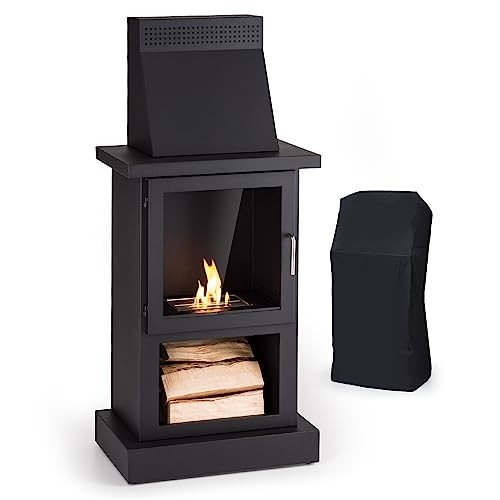The Charm and Functionality of Fireplaces: A Comprehensive Guide
Fireplaces have long been a central feature in homes, representing heat, friendship, and comfort. They come in various styles, products, and fuel types, dealing with the preferences and requirements of varied homeowners. This short article delves into the multifaceted world of fireplaces, exploring their history, types, setup factors to consider, and upkeep suggestions, while providing FAQs to address typical queries.
A Brief History of Fireplaces
Historically, fireplaces functioned as the foundation for cooking and heating homes. In ancient times, an open hearth was typically put in the center of a residence. Over centuries, architectural advancements helped with the advancement of more sophisticated designs, progressing from basic stone structures to elaborate mantels that preside over modern home.
Secret Historical Milestones:
- Ancient Times: Open fires in caves and primitive huts for heat and cooking.
- Middle Ages: Large, typically centralized chimney structures in terrific halls of castles.
- Renaissance: Decorative mantels and designs gain popularity, with the fireplace ending up being a sign of wealth and status.
- Industrial Revolution: Advancements in products and producing permit for a wider variety of fireplace styles.
- Modern Era: Gas and electric fireplaces end up being commonplace, enabling increased benefit and safety.
Kinds of Fireplaces
Today, many kinds of fireplaces are available, each with its distinct qualities. Below is a breakdown of the most common types:
| Fireplace Type | Description | Pros | Cons |
|---|---|---|---|
| Wood-Burning | Traditional fireplaces sustained by wood. | Authentic experience, heat output. | Labor-intensive, requires correct venting/maintenance. |
| Gas | Fireplaces that use gas or lp. | Easy to utilize and keep. | Less atmosphere compared to wood. |
| Electric | Utilizes electrical energy to create heat and flames. | Safe, no venting required. | Minimal heat output, greater energy costs. |
| Bioethanol | Utilizes bioethanol fuel, producing tidy flames. | Eco-friendly, portable. | Requires routine refueling. |
| Pellet | Uses compressed wood pellets as fuel. | Tidy burning, sustainable. | Requires power for operation. |
Extra Considerations
When selecting a fireplace, it is necessary to think about aspects such as:
- Fuel Availability: Consider what fuels are readily accessible in your area.
- Space and Aesthetics: The size of your living area and your design choices should guide your choice.
- Building Regulations: Always consult regional guidelines to ensure compliance and safety.
Installation Considerations
Setting up a fireplace includes more than merely positioning a structure in your home. Thorough preparation, professional input, and adherence to safety codes are critical. Here are some critical steps:
- Planning: Consider the size and type of fireplace, where it will be positioned, and its intended usage.
- Assessment: Hire a licensed specialist to assess your home and ensure proper setup.
- Allows: Obtain any needed structure permits from regional authorities.
- Products: Select proper materials for the fireplace and surrounding area. Guarantee they are fireproof and developed for your fuel type.
Maintenance Tips for Fireplaces
Routine maintenance ensures your fireplace operates safely and effectively. Here are important maintenance suggestions categorized by fireplace type:
Wood-Burning Fireplaces
- Chimney Cleaning: Have your chimney cleaned up yearly to prevent creosote accumulation.
- Inspect for Damage: Check for fractures and damage to the firebox and chimney structure.
- Fire wood Storage: Store firewood far from your home to avoid insect invasions.
Gas Fireplaces
- Log Inspection: Regularly analyze ceramic logs for cracks and replace if required.
- Vent Cleaning: Ensure that vents are devoid of obstructions.
- Pilot Light Check: Test pilot lights and ignition systems routinely.
Electric Fireplaces
- Cord Inspection: Frequently check electrical cords for tearing or use.
- Clean Surfaces: Wipe down surface areas routinely to eliminate dust and particles.
- Smoke alarm: Ensure smoke alarm in the area are functional.
Bioethanol and Pellet Fireplaces
- Fuel Storage: Store fuels in a cool, dry place away from direct sunlight.
- Regular Refueling: Monitor fuel levels and refuel as required.
- Ventilation: Ensure correct ventilation when utilizing these fireplaces.
Frequently asked questions About Fireplaces
Q1: Do I need an authorization to install a fireplace?
Yes, most municipalities require permits for fireplace installations to make sure security and compliance with local building codes.
Q2: How frequently should I clean my chimney?
It is recommended to have your chimney cleaned up at least when a year, specifically if you use your fireplace frequently.
Q3: Can I transform a wood-burning fireplace to gas?
Yes, many property owners transform wood-burning fireplaces to gas for benefit, but seeking advice from an expert is suggested to make sure a correct conversion.
Q4: Do electric fireplaces produce heat?
Yes, electric fireplaces can produce heat; nevertheless, their primary function is frequently for atmosphere, making them an ideal option for those who desire a fire look without substantial heating.
Q5: Are bioethanol fireplaces safe?
Bioethanol fireplaces are usually safe when used correctly; nevertheless, they need proper ventilation, and users must follow all producer standards.
Fireplaces not just add visual attract homes but also offer useful heating services. With various types, styles, and upkeep requirements, homeowners can make educated options that best match their needs and way of lives. Whether choosing the charm of a wood-burning fireplace or the convenience of a gas model, a fireplace can significantly enhance a home's convenience and environment. As the hearth remains a centerpiece in homes, it continues to cultivate heat, discussion, and connections among friends and family.

